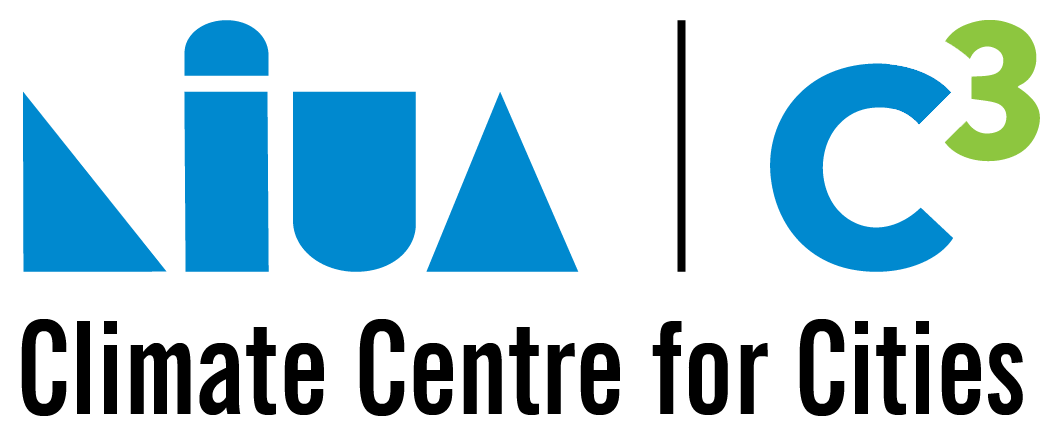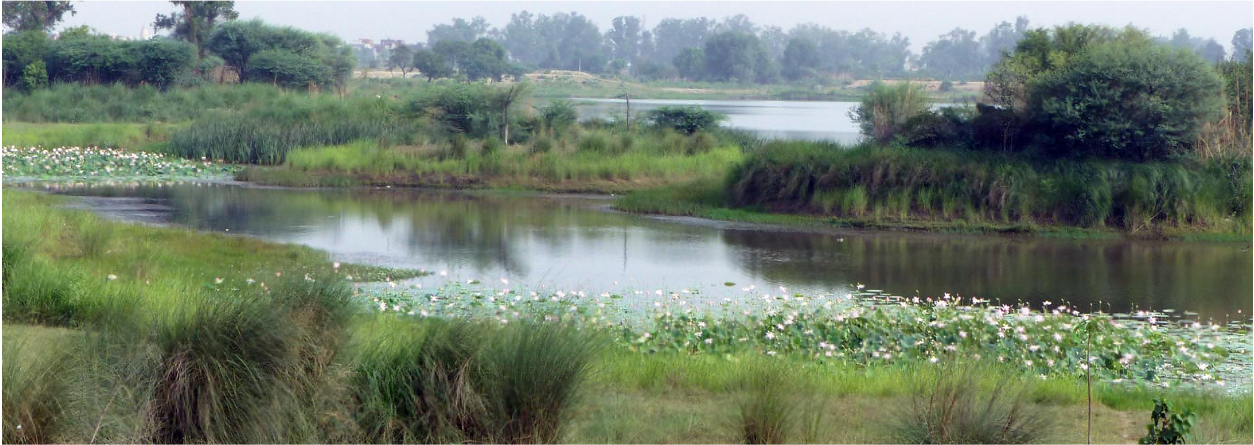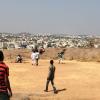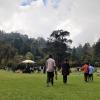RESTORING URBAN ECOSYSTEMS THROUGH GREEN BLUE PLANS
Published On:
Saturday, June 5, 2021
Cities benefit in numerous ways from ecological features such as forests, rivers and wetlands, while also from man-made features such as planned parks, ponds, trees etc. However, increasing development pressures have had a detrimental impact on these valuable natural assets. For example, Delhi despite having more than 900 water bodies in the form of lakes, ponds and tanks has seen a marked reduction over the past decade due to encroachment, pollution and natural drying up of water bodies. A recent article by Observer Research Foundation highlights that Mumbai, in the past three decades, has witnessed a loss of almost 60% in its vegetation. The situation is no different in most Indian cities, and the repercussions are already being witnessed with alarming frequency. The air is getting more polluted, temperatures are soaring, instances of flooding are on the rise, urban biodiversity is shrinking and several others.
To address these challenges of degrading urban ecosystems, there has been a growing focus on developing green blue plans. This essentially involves reviving and interconnecting the blue and green features within cities using an amalgamation of planning, engineering and landscaping elements. While this is not a new concept, and some cities have explored this to a fair degree of success, the planning and implementation of this remains a challenge in most cities. A common mistake made is using a siloed approach, with focus on either parks, or water bodies individually and not considering a larger catchment area or larger network of such assets. The planning of city’s infrastructure, need to become more ecologically sensitive by reviving the degrading assets, while also developing and adapting to nature-based solutions to meet the overarching goal of restoring ecosystem for creating sustainable cities.
Why the Green Blue Plan?
Blue and green features are important elements within a city, and have their own individual benefits. However, the benefits increase manifold when the blue and green features are planned and managed in an interconnected network, or in other words a green blue continuum. This interwoven network does not limit itself to providing environmental benefits such as richer biodiversity, increased ground water recharge levels, better air quality, better resilience to climate change and disaster etc, but also provides socio-cultural, economic and health benefits. Also, the network will enhance the quality and health of green and blue assets individually, thus ensuring added benefits to the entire ecosystem. For instance, the planning of parks along the water bodies adds recreational value to its users, enhances the quality of life, protects water bodies from encroachment, adding socio-cultural, economic and health benefits to the ecosystem. Whereas, some of these green blue areas in low-lying areas may double up as flood sinks that help recharge the ground water levels, prevent flooding, hence adding environmental value to the urban ecosystem.
Success stories
Cities across the globe, have adopted different green blue interventions to address urban challenges of degraded ecosystems. Singapore, in 2006, launched its ABC waters programme (Active, Beautiful, Clean) that restored a concrete canal into a soft river edge using unique techniques such as soil bio engineering, riparian buffers etc. The programme led to the city having an integrated network of canals, drains and reservoirs, which was driven through Singapore’s Master Plan and project specific guidelines. There are other green blue projects/planning approaches such as ‘Sponge City’ in Wuhan, China; ‘Water sensitive Urban Design (WSUD) programmes implemented various Australian cities, that have demonstrated the revival of the city’s ecosystem while also informing the city-wide policies and a broader discourse around ecosystem restoration. Indian cities, can adopt similar strategies to develop a green blue plan, towards reviving its ecosystem.
Adopting the Green Blue Plan
Even though a well-designed green blue continuum within the city has a lot of value to add to the urban ecosystem, much needs to be done for cities to adopt, adapt and mainstream these strategies. One of the biggest challenges that Indian cities face today is lack of a complete database of its blue green assets with clear identified boundaries. As a first step, cities need to develop a detailed inventory that entails production of spatial maps of existing assets that comprise of the urban ecosystem, their boundaries, distinct characteristics, ownership, status etc. Second, an important strategy in achieving the continuity of the network would be to extend it to the built environment by mandating green ratings for building structures, developing tools such as greening factor, providing incentives/ discentives for incorporating blue green features within the site. Third, for such a network to be a success, it is important to engage its citizen in the process of creating this network. For instance, citizens can help in mapping and monitoring the health of these assets, organize events along such networks, generate awareness and consciousness about maintaining these assets, therefore contributing largely in restoring the ecosystem. Developing and implementing, a blue green plan, is a proven solution for both revitalising and enhancing natural ecosystems in urban settings. It is worthwhile for cities in India to embrace this proactively with a view to usher in an era of environmentally sensitive cities.
Contact Us
1st and 2nd Floor, National Institute of Urban Affairs
India Habitat Centre Lodhi Road New Delhi-110003
Please Call Help Desk at 011-411-86699
Monday - Friday, 9:00 AM - 5:00 PM
Please write to us at c-cube@niua.org







Post a Comment